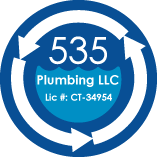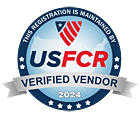A COST-EFFECTIVE & ENVIRONMENTALLY FRIENDLY WAY TO GENERATE HOT WATER FOR YOUR HOME
Solar water heaters are a cost effective and environmentally friendly way to generate hot water for your home. They can be used in any climate, and their fuel source- sunshine- is free.
According to the US Department of Energy, average heating costs are a little less than half of the utility bill in a typical household. This makes it the most expensive component of your bill. Solar hot water heaters reduce this expense by cutting down on the gas or electricity needed to generate hot water.
How Are Solar Water Heaters Different From Traditional Systems?
Traditional water heaters connect directly with your household grid energy. Solar-powered water heaters draw power from solar energy collectors, which absorb energy directly from the sun. Such a system reduces your dependence on the power grid, resulting in lower energy costs and a reduced carbon footprint.
Solar water heaters are a stand-alone system that can be installed without expensive solar panels. Panels create electricity for your home, while water heaters focus solely on generating hot water. Solar-powered water heaters can be installed in conjunction with panels or on its own. The two systems are mutually exclusive.
How Does a Solar Water Heater Work?
A typical solar water heater is comprised of two parts – a solar collector and a storage tank. Depending on whether they have circulating pumps, the systems are categorized as either active or passive. Active systems have circulating pumps and controls while passive systems do not.
Active Solar Water Heating Systems
There are two types of active solar water heating systems: direct and indirect circulation systems. Direct circulation systems are recommended in Oahu where we never experience below freezing temperatures.
Direct circulation systems
In the active direct circulation systems, pumps circulate water from the collectors and into the household.
Passive solar systems
Passive solar water heating systems are typically less expensive than active systems, but they’re usually not as efficient. However, passive systems are known to be more reliable and last longer. There are two basic types of passive systems:
Integral collector-storage passive systems
Integral collector storage units are one of the simplest solar hot water heating systems available and can be easily installed into any conventional water heating installation. Cold water flows under normal water pressure into the solar collector, which preheats and stores the water.
The transfer of the solar heat from the collector to the water is by natural convection; no outside energy is used in this transfer making it a completely passive system. Whenever hot water is required, the solar heated water stored in the batch collector flows out by force of gravity or the pressure of the cold water replacing it and continues into the conventional backup water heating system inside the house. This type of hot water installation is a direct system (open-loop) as the water being heated is the same water you drink.
In addition to working well in Oahu’s climate, integral collector-storage passive systems work well in households with significant daytime and evening hot water needs.
Thermosyphon systems
In thermosyphon systems, water flows through when warm water rises as cooler water sinks. The collector must be installed below the storage tank so that warm water will rise into the tank. These systems are reliable, but 535 Plumbing pays careful attention to the roof design because of the heavy storage tank. Thermosyphon systems are usually more expensive than integral collector-storage passive systems.
Storage tanks and solar collectors
Most solar water heaters require a well-insulated storage tank. Solar storage tanks have an additional outlet and inlet connected to and from the collector. In two-tank systems, the solar water heater preheats water before it enters the conventional water heater. In one-tank systems, the back-up heater is combined with the solar storage in one tank.
Three types of solar collectors are used for residential applications:
Flat-plate collector
Glazed flat-plate collectors are insulated, weatherproofed boxes that contain a dark absorber plate under one or more glass or polymer covers. Unglazed flat-plate collectors- typically used for solar pool heating- have a dark absorber plate, made from metal or polymer, without a cover or enclosure.
Integral collector-storage systems
Also known as ICS or batch systems, integral collector-storage systems feature one or more black tanks or tubes in an insulated, glazed box. Cold water passes through the solar collector, which preheats the water. The heated water continues on to a conventional backup water heater, providing a reliable source of hot water.
Evacuated-tube solar collectors
Evacuated-tube solar collectors feature parallel rows of transparent glass tubes. Each tube contains a glass outer tube and metal absorber tube attached to a fin. The fin’s coating absorbs solar energy but inhibits heat loss. These collectors are used more frequently for U.S. commercial applications.
Solar water heating systems almost always require a backup system for cloudy days and times of increased demand. Conventional storage water heaters provide backup and may already be part of the solar system package. A backup system may also be part of the solar collector, such as rooftop tanks with thermosyphon systems. Because an integral-collector storage system already stores hot water in addition to collecting solar heat, it may be packaged with a tankless or demand water system for backup.
Installing and Maintaining Your System
The correct installation of your solar water heater depends on many factors. These factors include solar resource, climate, local building code requirements, and safety issues; therefore, it’s best to have a qualified solar thermal systems contractor, like 535 Plumbing, install the system.
After installation, maintaining the system will keep it running properly. Passive systems don’t require much maintenance. Discuss the maintenance of active systems requirements with your provider, and consult the owner’s manual.
Regular maintenance on simple systems can be as infrequent as every 3–5 years, preferably by 535 Plumbing. Systems with electrical components usually require a replacement part or two after 10 years.
535 Plumbing is a Hawaii Energy Participating Contractor
As a Hawaii Energy Participating Contractor, you can be assured that you 535 Plumbing home visit will include:
- An analysis of your hot water usage
- A calculation of your anticipated energy savings
- A bid/cost estimate for a complete installation
- An instant deduction of the newly increased Hawaii Energy Rebate ($2,000 for Oahu) from the installed cost of your system
- An inspection of randomly selected systems
Solar Energy Water Heater Oahu Service Locations
We proudly serve all of Oahu with Solar Energy Water Heater Services, including the following locations:
Aiea
Honolulu
Kailua
Kaneohe
Pearl City
Hawaii Kai
Kahala
Lanikai
Manoa
Waikiki
Don’t see your location on the list? Give us a call at (808) 300-0535 today. We’d be happy to help you with all of your plumbing needs!
SERVICES
Whether your project is commercial or residential, 535 Plumbing has you covered.
We take pride in going "beyond the call."
WE’RE HERE TO HELP
Please fill out our form and we’ll get back with you quickly. If this is an emergency during business hours, please call us at (808) 300-0535. Mahalo!

1130 N. Nimitz Highway
Suite B-180
Honolulu, HI 96817
Sunday 8AM-4:30PM
Monday 8AM-4:30PM
Tuesday 8AM-4:30PM
Wednesday 8AM-4:30PM
Thursday 8AM-4:30PM
Friday 8AM-4:30PM
Saturday 8AM-4:30PM
Shane Mizusawa
(808) 300-0535
Lic #: CT-34954




